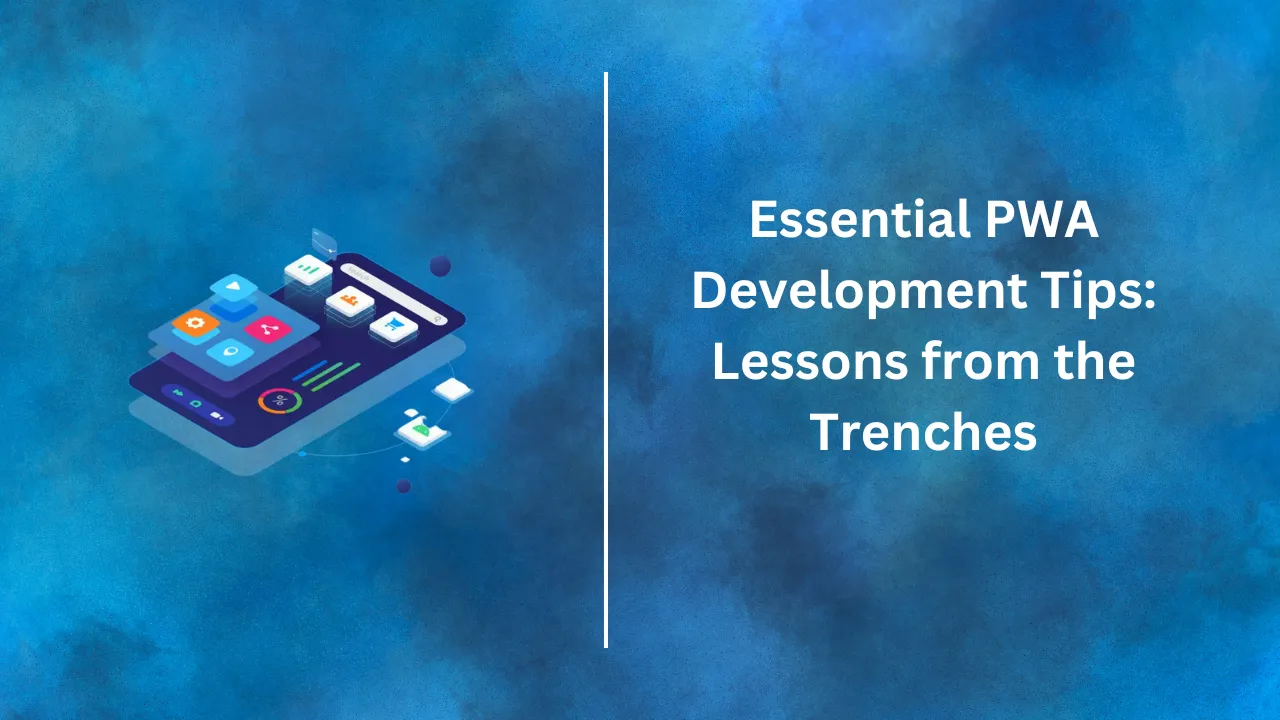
Back to blog
•
4 min read
Essential PWA Development Tips: Lessons from the Trenches
Learn crucial lessons about PWA development, including handling native feature limitations and implementing proper update mechanisms to ensure your users always have the latest version.

Understanding Progressive Web Apps: The Good and The Limited
Progressive Web Apps (PWAs) bridge the gap between web and native applications, offering features like offline functionality, push notifications, and home screen installation. While they provide excellent cross-platform reach with minimal friction, understanding their limitations is crucial for successful implementation.
When PWAs Shine
- Content-focused applications
- Cross-platform needs with basic device integration
- Web-first experiences requiring offline access
- Applications needing wide reach with minimal friction
When to Consider Alternatives
- Applications requiring deep hardware integration
- Apps needing extensive native device features
- Performance-critical applications
- Complex background processing requirements
Critical Lessons from Real-World PWA Development
1. Native Feature Limitations: A Reality Check
One of the most significant challenges I encountered was the limited access to native device features. While PWAs can access some device capabilities (camera, geolocation), many native features remain out of reach.
In my case, implementing scheduling and alarm features became impossible because PWAs cannot access system-level alarm APIs. This limitation forced a complete redesign of certain features, as background notifications and scheduled events couldn’t function reliably without keeping the app active.
2. The Update Mechanism: A Critical Oversight
Perhaps the most valuable lesson learned was the necessity of implementing an update mechanism from day one. Without it, users become stuck on older versions, leading to:
- Persistent bugs
- Missing features
- Support nightmares
- Security vulnerabilities
This issue becomes particularly problematic when users aren’t familiar with PWA installation processes. In my case, many users had their PWAs installed by someone else and didn’t know how to manually reinstall or update from the web. Without an automatic update mechanism, these users remained stuck on outdated versions indefinitely, creating significant support challenges.
Here’s a practical implementation of an update system that I use in production:
// In your main application code
window.updateAvailable = new Promise((resolve, reject) => {
// Check if service workers are supported
if (!('serviceWorker' in navigator)) {
const errorMessage = `This browser doesn't support service workers`;
console.error(errorMessage);
reject(errorMessage);
return;
}
navigator.serviceWorker.register('/service-worker.js')
.then(registration => {
console.info(`Service worker registration successful (scope: ${registration.scope})`);
// Check for updates every minute
setInterval(() => {
registration.update();
}, 60 * 1000);
registration.onupdatefound = () => {
const installingServiceWorker = registration.installing;
installingServiceWorker.onstatechange = () => {
if (installingServiceWorker.state === 'installed') {
// Resolve with true if there's an existing controller,
// which means this is an update
resolve(!!navigator.serviceWorker.controller);
}
}
};
})
.catch(error => {
console.error('Service worker registration failed with error:', error);
reject(error);
});
});
// Method to register for update notifications (useful for Blazor or other frameworks)
window.registerForUpdateAvailableNotification = (caller, methodName) => {
window.updateAvailable.then(isUpdateAvailable => {
if (isUpdateAvailable) {
caller.invokeMethodAsync(methodName).then();
}
});
};
This implementation offers several advantages:
- Automatic service worker registration
- Periodic update checks (every minute)
- Promise-based update detection
- Framework-agnostic notification system
- Proper error handling and logging
Best Practices for PWA Updates
1. Make Updates Visible
- Implement clear UI elements indicating available updates
- Use non-intrusive but noticeable update notifications
- Consider a version display in your app’s settings
2. Implement Automatic Update Checks
- Schedule regular update checks
- Consider checking on app launch
- Implement retry mechanisms for failed checks
3. Force Critical Updates
- Implement mechanisms to force updates for security patches
- Use version control to track critical changes
- Consider blocking app usage until critical updates are applied
4. User Education
- Provide clear update instructions
- Explain the importance of updates
- Document the update process for support teams
Conclusion
While PWAs offer significant advantages in terms of reach and ease of deployment, success lies in understanding and working within their limitations. The two most critical lessons from my experience are:
- Carefully evaluate native feature requirements before choosing PWA as your solution
- Always implement an update mechanism from the beginning of your project
These insights can save significant development time and prevent major headaches down the line. Remember: the success of your PWA depends not just on its features, but on how well you can maintain and update it for all users.